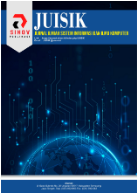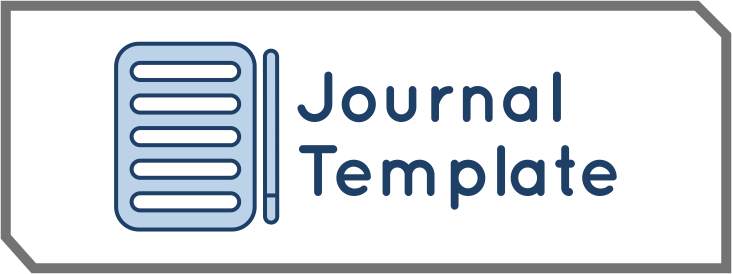Desain model Sistem Teknologi Blockchain untuk Pemerataan Pembangunan di Indonesia
DOI:
https://doi.org/10.55606/juisik.v5i3.1710Keywords:
Blockchain, Development Equity, Digital Governance, Smart Contract, TransparencyAbstract
Development inequality in Indonesia remains a strategic issue, with a significant gap between the western and eastern regions. Various factors such as corruption, bureaucratic inefficiency, and lack of transparency in public fund management have undermined the effectiveness of development programs. This article proposes a blockchain-based model design as an innovative approach to enhance transparency, accountability, and efficiency in the distribution of national development funds. Through a consortium blockchain model equipped with smart contracts, every transaction can be traced in real time, while fund disbursement is executed automatically based on verified project milestones. This mechanism enables active public participation in monitoring processes while minimizing the potential for budget misuse. With an estimated initial investment of IDR 110–195 billion and potential annual savings of IDR 150–200 trillion, the system implementation promises a Return on Investment (ROI) of 1000–1500% within three to five years. The article also presents the system architecture design, business process notation for stakeholder involvement, and business process notation for community engagement in monitoring and supervising development projects implemented in their respective regions. This approach establishes transparency in the distribution of development programs from the central government to regional areas, which can be directly monitored by local communities.
References
Allen, D., Berg, C., & Novak, M. (2019). Blockchain and the economic institutions of capitalism. Edward Elgar Publishing.
Androulaki, E., Barger, A., Bortnikov, V., Cachin, C., Christidis, K., De Caro, A., ... & Yellick, J. (2018). Hyperledger Fabric: A distributed operating system for permissioned blockchains. Proceedings of the Thirteenth EuroSys Conference, 1–15. ACM. https://doi.org/10.1145/3190508.3190538
Badan Pengawasan Keuangan dan Pembangunan. (2020). Laporan pengawasan akuntabilitas pembangunan daerah. BPKP.
Badan Pusat Statistik. (2023). Produk domestik bruto Indonesia menurut pulau 2023. BPS.
Batubara, F. R., Ubacht, J., & Janssen, M. (2018). Challenges of blockchain technology adoption for e-government: A systematic literature review. Proceedings of the 19th Annual International Conference on Digital Government Research, 1–9. ACM. https://doi.org/10.1145/3209281.3209317
Belair, A. R. (2003). Shopping for your self: When marketing becomes a social problem [Disertasi, Concordia University]. Concordia University.
Bully, G. S., Syafri, & Nurhayati. (2024). Analisis ketimpangan infrastruktur kelistrikan di Indonesia bagian timur. Jurnal Ilmiah Wahana Pendidikan, 10(15).
Buterin, V. (2014). A next-generation smart contract and decentralized application platform. Ethereum White Paper. https://ethereum.org/en/whitepaper/
Christidis, K., & Devetsikiotis, M. (2016). Blockchains and smart contracts for the Internet of Things. IEEE Access, 4, 2292–2303. https://doi.org/10.1109/ACCESS.2016.2566339
Direktorat Jenderal Perbendaharaan Kementerian Keuangan RI. (2023). Laporan keuangan dana infrastruktur dan transfer ke daerah. Kementerian Keuangan Republik Indonesia.
Harison, et al. (2025). E-commerce application of oil palm fresh fruit bunches supply chain. AIP Conference Proceedings.
Harison, et al. (2025). E-offering fruit fresh bunches oil palm to independent farmer users with a blockchain approach. AIP Conference Proceedings. https://doi.org/10.1063/5.0250548
Indonesia Corruption Watch. (2022). Tren penindakan kasus korupsi sektor infrastruktur di Indonesia tahun 2022. ICW.
Jurnal Peneliti. (2023). Program BSPS dan dampaknya terhadap pemerataan sosial-ekonomi. Lembaga Penelitian Indonesia.
Kementerian Koordinator Infrastruktur. (2023). Kebijakan percepatan pembangunan daerah tertinggal. Kemenko Infrastruktur.
Komisi Pemberantasan Korupsi. (2021). Laporan tahunan KPK 2021: Sinergi untuk Indonesia berintegritas. KPK RI.
Margetts, H., & Naumann, A. (2017). Government as a platform: Public administration in the digital age. Oxford University Press.
Neliti. (2023). Peran lembaga pembiayaan dalam pemerataan infrastruktur di Indonesia. Neliti.
Nguyen, G. T., Kim, K., & Lee, S. (2019). Performance evaluation of Hyperledger Fabric in IoT-based applications. Sensors, 19(22), 4821. https://doi.org/10.3390/s19224821
Politeknik Keuangan Negara STAN. (2023). Dampak infrastruktur terhadap pertumbuhan ekonomi regional di Jawa Timur. PKN STAN.
Prasetyo, A. (2024). Analisis ketimpangan pembangunan infrastruktur Kabupaten Cilacap [Tesis, Universitas Gadjah Mada].
Reuters. (2023). Infrastructure development and regulatory oversight in Southeast Asia. Reuters News Agency.
Rodzi, M. (2023). Analisis pembangunan infrastruktur di Indonesia: Ketimpangan antar wilayah. STIA APMD.
Smart Dubai Office. (2018). Dubai blockchain strategy 2020. Government of Dubai.
Tapscott, D., & Tapscott, A. (2016). Blockchain revolution: How the technology behind Bitcoin is changing money, business, and the world. Penguin.
World Bank. (2017). Blockchain: Opportunities for private enterprises and government transparency. The World Bank.
World Bank. (2023). Financing infrastructure for inclusive growth. The World Bank.
Zheng, Z., Xie, S., Dai, H., Chen, X., & Wang, H. (2018). Blockchain challenges and opportunities: A survey. International Journal of Web and Grid Services, 14(4), 352–375. https://doi.org/10.1504/IJWGS.2018.095647
Downloads
Published
How to Cite
Issue
Section
License
Copyright (c) 2025 Jurnal ilmiah Sistem Informasi dan Ilmu Komputer

This work is licensed under a Creative Commons Attribution-ShareAlike 4.0 International License.










